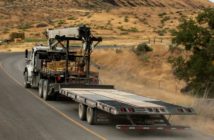WorkSafe has published what it calls ‘priority plans’ to guide targeted engagement and enforcement activities as part of the agency’s much-needed strategic reset

WorkSafe says it will deliver enforcement, engagement, and permitting activities across priority areas to maximise its influence and achieve better, more equitable outcomes.
The plans cover the sectors with highest work-related harm – construction, manufacturing, forestry, and agriculture. There is also a permitting plan covering specific high-risk work such as mining, adventure activities, and some work involving hazardous substances.
WorkSafe says its main role is to influence businesses and workers to meet their health and safety responsibilities and to hold them to account if they don’t. The new strategy aims to simplify how WorkSafe will deliver on this.
The strategy acknowledges WorkSafe cannot be everywhere and emphasises the importance of collaboration. WorkSafe says it will continue to work with partners, including industry bodies, government agencies, iwi, and unions, to understand risk and harm, measure the impact, and refine plans over time.
Priority plans
Guided by evidence about acute, chronic, and catastrophic harm, WorkSafe will prioritise high-risk sectors and high-risk activities. Across these priority areas, the agency says it will deliver enforcement, engagement and permitting activities to maximise its influence and achieve better, more equitable outcomes.
Sector plans include:
- Agriculture – Accounts for around 25% of acute work-related fatalities and serious injuries, while only 6% of employment is in this sector. Most serious harm occurs in dairy, sheep, and beef farming. WorkSafe’s plan sets out how it will target the biggest risks and work with others to influence improved health and safety culture in agriculture.
- Construction – Has among the highest rates of acute and chronic harm. It accounts for around 15% of work-related fatalities and serious injuries, and it has the largest number of workers with exposure to toxic dusts and fumes. To prevent harm on construction sites, WorkSafe says businesses must keep up with constantly changing risks, especially where multiple businesses work together. The agency’s plan sets out how it will target the biggest risks to achieve safe construction sites and influence large businesses to lead the way.
- Forestry – Has a very high rate of acute harm, mostly from felling trees. The fatality rate in forestry is about 20 times higher than the average for all sectors. Workers that are harmed are more likely to be young, Māori, and from rural communities. To reduce this harm, WorkSafe says the whole sector needs to plan for and practise safe tree felling. The forestry plan sets out how WorkSafe will work with forest owners, managers, contractors, kaimahi and communities to achieve this.
- Manufacturing – This is a large sector with high numbers of Māori and Pacific workers. It has the largest total number of injuries of any sector, and some workers have high exposure to toxic dusts and fumes. Health and safety performance has been poor compared to other sectors over the past decade. WorkSafe says improving performance starts with getting the basics right, like safe machinery and good worker training. The agency’s plan sets out how it will influence better risk management and worker engagement in the manufacturing subsectors where most harm occurs.
The government has also set rules and regulations for specific high-risk work. This includes mining, adventure activities, asbestos removal, some work involving hazardous substances, and operating equipment such as cranes and scaffolding. If these activities are not well managed, they can result in serious or catastrophic harm.
WorkSafe is responsible for overseeing the rules and regulations and checking that businesses and individuals permitted to undertake this high-risk work meet the safety requirements.
Its permit plan sets out how it will:
- improve the efficiency, transparency, and quality of the permitting process
- clarify expectations for regulated parties
- monitor whether this high-risk work is being carried out according to the rules.
Read the full permit plan here.








